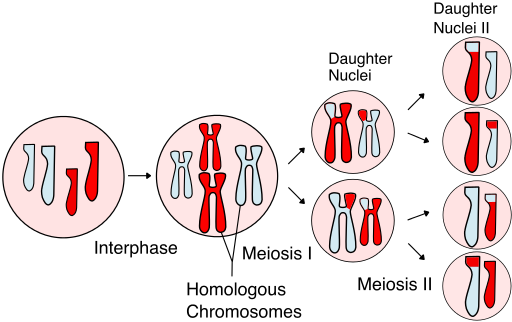Difference between revisions of "Meiosis"
| Line 8: | Line 8: | ||
===About Meiosis=== | ===About Meiosis=== | ||
| − | : [[Meiosis]] is how [[multicellular]] [[organism]]s including [[human]]s produce [[gamete]]s for [[Sexual Reproduction|sexual reproduction]]. | + | : [[Meiosis]] is how [[multicellular]] [[organism]]s (including [[human]]s) produce [[gamete]]s for [[Sexual Reproduction|sexual reproduction]]. |
: The 4 daughter [[Cell (Biology)|cells]] are all [[genetically]] different to one another. | : The 4 daughter [[Cell (Biology)|cells]] are all [[genetically]] different to one another. | ||
: During [[meiosis]] the [[Cell Nucleus|nucleus]] divides into two separate [[diploid]] [[Cell Nucleus|nuclei]] before dividing a second time to produce 4 [[haploid]] [[Cell Nucleus|nuclei]]. | : During [[meiosis]] the [[Cell Nucleus|nucleus]] divides into two separate [[diploid]] [[Cell Nucleus|nuclei]] before dividing a second time to produce 4 [[haploid]] [[Cell Nucleus|nuclei]]. | ||
Revision as of 11:55, 18 June 2019
Key Stage 4
Meaning
Meiosis is the process of asexual reproduction where a parent cell produces four haploid daughter cells known as gametes that are all genetically unique.
Noun: Meiosis
Adjective: Meiotic
About Meiosis
- Meiosis is how multicellular organisms (including humans) produce gametes for sexual reproduction.
- The 4 daughter cells are all genetically different to one another.
- During meiosis the nucleus divides into two separate diploid nuclei before dividing a second time to produce 4 haploid nuclei.
- The four daughter cells are called haploid cells because they contain half the number chromosomes needed to grow a new organism.
| A diagram showing the chromosomes during the process of meiosis. |
